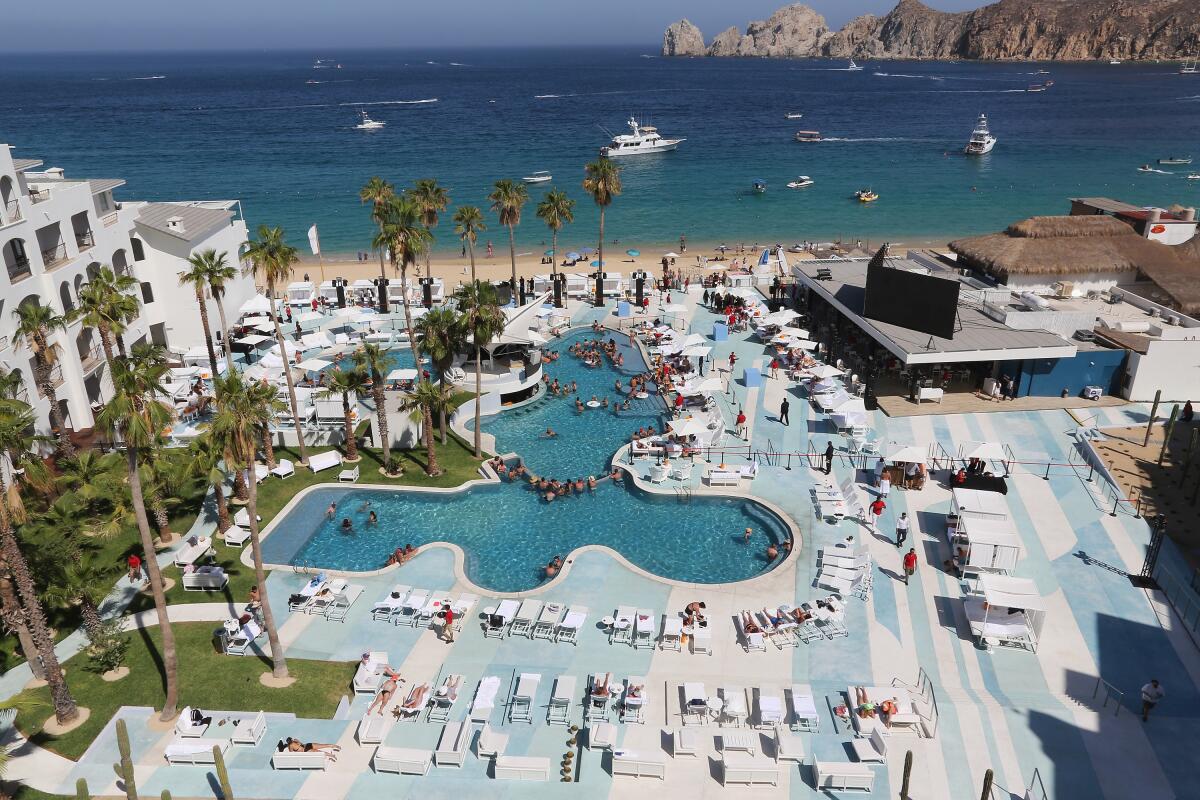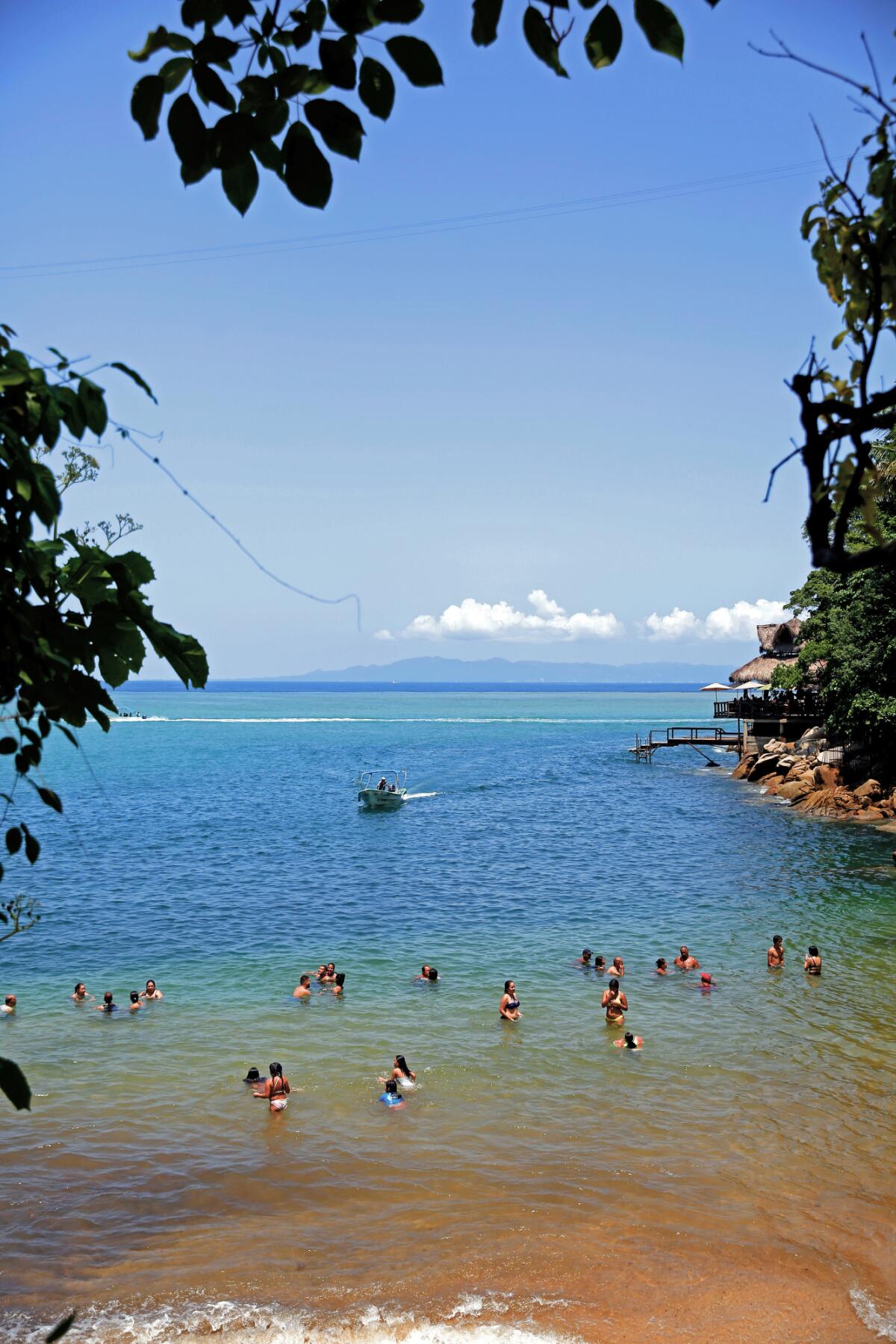Mexico closed its tourism board, so tourist hot spots are going DIY in LA

- Share via
The Mexican government defunded its national tourism board, forcing some hotel and resort towns south of the border to take matters into their own hands to avoid losing their biggest source of travelers — California.
The result has been the opening of two privately funded tourism offices in Los Angeles.
The hotels and restaurants in Los Cabos, a region in the southern peninsula of Baja California, have pooled their funds to open the Los Cabos Tourism Board in offices in Century City so they can promote their destination to travel agents and others in Southern California.
“The opening of the Los Angeles office was a completely rational and strategic step that we needed to take,” said Rodrigo Esponda, managing director of the Los Cabos Tourism Board.
A few miles away in downtown Los Angeles, four former employees of the Mexico Tourism Board launched a private marketing agency, dubbed Studio Jungla, to promote Yucatan and Oaxaca, among other Mexican destinations.

“We have a good relationship with tour operators, with media and with meeting planners here,” said Jorge Gamboa, a former Mexico Tourism Board employee and now staffer at Studio Jungla. “This is a good opportunity to promote Mexico because Mexico is very unprotected.”
The opening of the privately funded offices reflects an effort by Mexican tourism officials to avoid any disruption to the flow of tourists — and dollars — streaming across the border.
For good reason. Mexico had expected to welcome 45 million international visitors who would spend $23.3 billion while in the country in 2019. About 60% of those visitors were expected to come from the U.S. and 18% from California, according to a forecast by Mexican tourism industry experts before the tourism bureau was cut. The visitation numbers for this year were projected to be a 5.8% increase over the previous year.
While the projected growth is good news for Mexico’s tourism industry, it represents a slowdown from the last few years when the number of tourists visiting Mexico had grown by double digits annually.
Mexican tourism officials blame the slowdown on several factors, including a U.S. State Department Travel Advisory issued in April about an increase in crime and kidnappings in several Mexican states, overall concerns about the global economy and the grounding of the Boeing 737 Max plane, which several airlines, including Aeromexico, had planned to use to serve the growing demand for air travel.
Travel industry experts warn that cutting tourism promotions and marketing can hurt the popularity of a travel destination for several years to come.

“The data shows over and over again that when a government cuts tourism promotion, their competitors reap an enormous economic benefit,” said Roger Dow, chief executive of the U.S. Travel Assn., the trade group for the nation’s travel industry. “Then, when they realize their mistake and re-implement their marketing, it can take years to recover their previous market share.”
For that reason, Dow said his trade group is pushing Congress to reauthorize funding to promote the U.S. to international travelers. The promotional program, dubbed Brand USA, is paid for by fees charged to tourists and contributions from the private travel and tourism businesses.
“I’m never pleased to see a reduction in tourism promotion, whether here or abroad, for the simple fact that this industry creates economic benefits and good jobs for workers,” Dow added.
Mexico is the sixth most visited country in the world, according to the World Tourism Organization, so tourism industry leaders in Mexico said they were shocked to learn in December that the federal government was cutting its $295 million in annual funding to its national tourism promotion board.
“It’s really devastating for our country if there is no one here to keep the activation going for some of these activities,” said Alejandro Marin, one of the four leaders at Studio Jungla.
Instead, the government announced it plans to divert the tourism funding to build a passenger train to serve tourists, traveling between Cancún and Palenque, a project that newly elected Mexican President Andres Manuel Lopez Obrador had promised to fund before taking office Dec. 1.
In Mexico, the Visit Mexico website that was previously funded by the government is now financed by private donations from Google, Discovery Channel and hotel company Grupo Posadas. The Mexican government also created a panel of tourism entrepreneurs, including heads of airlines and hotel companies, to help fill the role vacated by the tourism panel.
Hotels and resorts of the Baja California region of Los Cabos are directly contributing $2.5 million this year, plus $12 million from hotel taxes to fund the Los Angeles office of the Los Cabos Tourism Board, where tourism representatives try to educate U.S. travel agents about Los Cabos and attend trade shows to promote the destination. The tourism office operates from a swanky Century City building.
Now that Mexico’s national tourism panel is out of commission, Esponda worries that other destinations, including Hawaii and the Bahamas, will lure Californians away from returning to their favorite vacation spots in Los Cabos.
“We don’t want to wait,” he said. “What we want is to keep a constant presence in the market.”
About 1.8 million international travelers visited the municipality on the southern tip of Baja Mexico, with California generating about 40% of those vacationers, he said.
Gamboa, the former Mexico tourism bureau employee, said he has the same concern about losing California visitors to other destinations such as Costa Rica, Argentina, Canada, France and Italy, among others.
“Every country has representatives here,” he said of California. “They do what we used to do.”
Gamboa’s Studio Jungla is already working to try to promote Yucatan, Puerto Vallarta and Oaxaca in California and plans in the coming months to work with Baja California south, Loreto, La Paz and Mulege.
More to Read
Inside the business of entertainment
The Wide Shot brings you news, analysis and insights on everything from streaming wars to production — and what it all means for the future.
You may occasionally receive promotional content from the Los Angeles Times.











